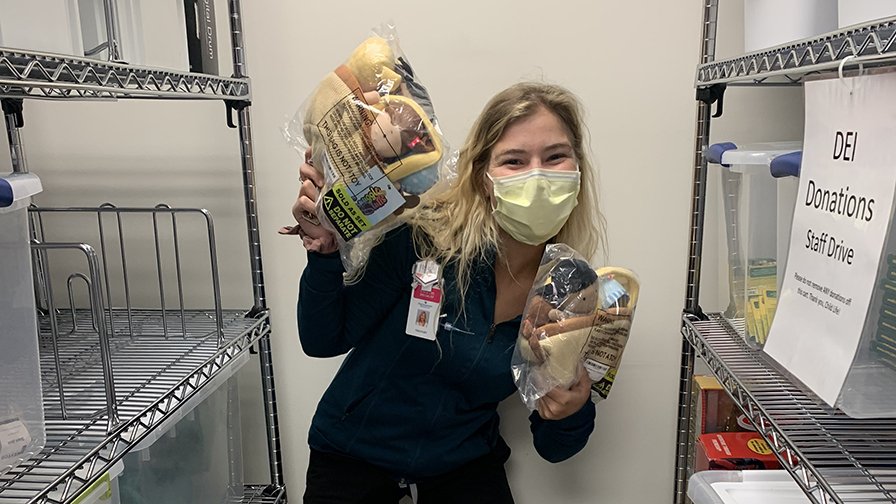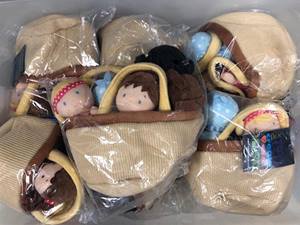

A set of markers representing different skin tones can make a difference for children.
Child life specialists across Intermountain work to help kids feel comfortable and safe when they’re in the hospital. They provide psychosocial and emotional support to patients and families during critical times, including pre-procedure, new diagnoses, long-term treatment, and end of life. To best connect with kids, the team relies on toys, books, and playtime, but their current supply doesn’t represent everyone.
“We have ‘hospital buddies’ that we use to help us teach children about their hospital experience,” says Kristine Hatton, child life specialist at Riverton Hospital. “These buddies are blank, allowing the patient to color them exactly as they’d like. I provided a ‘buddy’ for one recent patient to color. This little person looked through my magic markers and exclaimed, ‘You don’t have my skin color.’ How I wish I would’ve had just a simple set of markers representing different skin tones to offer this child. Something as small as a set of markers representing different skin tones will have a huge impact when working with our diverse population of patients.”
Without toys and books that represent all the patients they were seeing, the Child life specialist team recognized they were falling short of their mission: To decrease stress and increase coping through play, education, and normalization of the medical environment.
“Children are typically very aware of their environment and especially aware when they do or don't feel a part of things,” says Kristine. “For a child or teen to see that their identities are represented in toys and books provides them with confidence and a sense of belonging. This also facilitates a greater feeling of unity and acceptance overall.”

Toys like this were the result of a toy drive conducted recently.
Child life specialists teamed up with the Multicultural Caregiver Resource Group to sponsor a diverse toy and book drive during Hispanic/Latinx Heritage Month. Caregivers donated about 100 books and 150 toys to the cause.
“This toy drive and collaboration with the Multicultural Caregiver Resource Group has increased our ability to provide adequate resources and interventions to patients and families of diverse cultures,” says Kendall Furniss-Smedley, child life specialist at Utah Valley Hospital. “This will directly impact not only our department/individual diversity, equity, and inclusion goals, but it will increase patient and family satisfaction and experience at Intermountain.”
The Multicultural Caregiver Resource group (CRG), like all caregiver resource groups, is led by caregivers and works toward making Intermountain a more welcoming and equitable place for all.
“The diverse toy drive started as a caregiver idea, and all of the donations came from caregivers,” says Marco Verdeja, Multicultural CRG co-chair and community health program manager. “We felt like connecting caregivers with a way to directly impact inclusivity for patients and families was a perfect way to celebrate Hispanic/Latinx Heritage Month.”
Child life specialists had set a 2021 goal to expand their understanding of diversity, equity, and inclusion, as well as provide and advocate for more culturally competent interventions. By increasing the number of toys and books in facilities that represent different backgrounds and identities, they’re better equipped to meet their goal.
“Representation in toys and books allows pediatric patients to feel a sense of normalcy by having resources that they identify with,” says Amy Rapien, child life specialist at Utah Valley Hospital.
Caregiver donations will be used in playrooms and on pediatric units across the system to offer options that are inclusive to more patients and families.
“A child's identity is a sacred thing,” says Kristine. “How they identify themselves should be respected by all caregivers. Whether that’s their race, ethnicity, culture, religion, or gender. We have the responsibility to make our hospitals a safe place for children to express themselves...to be themselves.”

